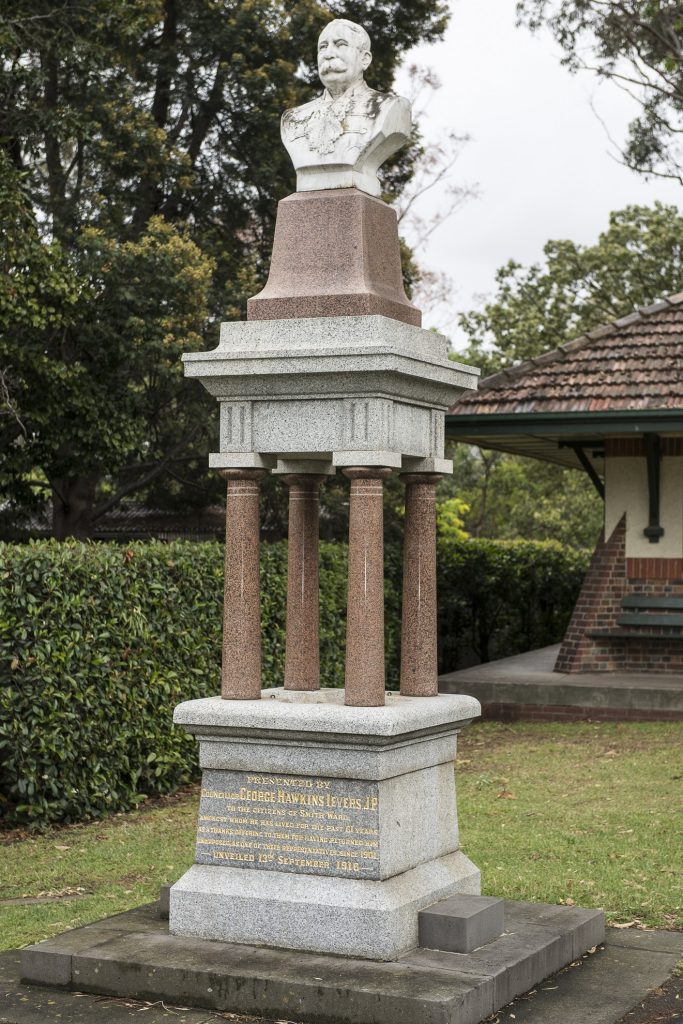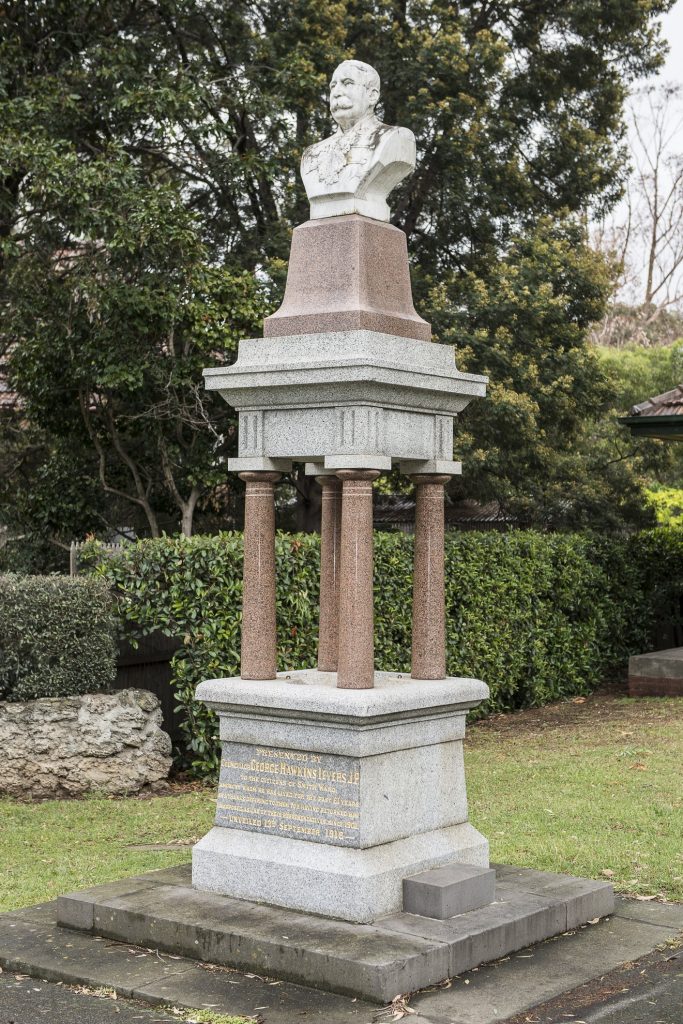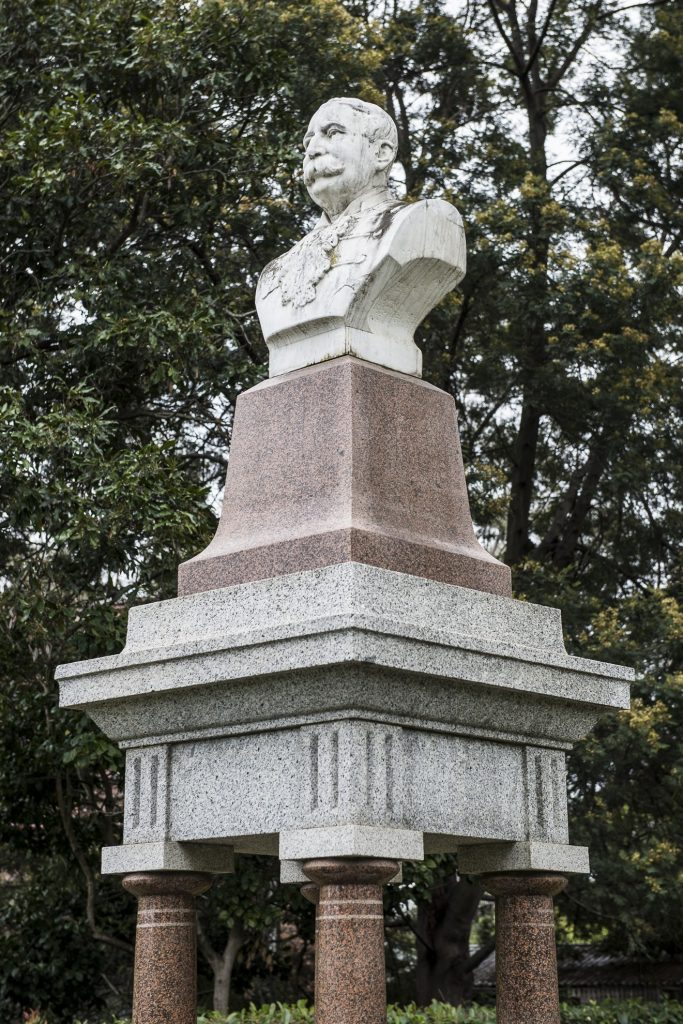RICHARDSON, Charles Douglas
George Hawkins Ievers Memorial Drinking Fountain
granite, bluestone, marble
PRESENTED BY COUNCILLOR GEORGE HAWKINS IEVERS, J.P. / TO THE CITIZENS OF SMITH WARD, / AMONGST WHOM HE HAS LOVED FOR THE PAST 61 YEARS / AS A THANKS OFFERING TO THEM FOR HAVING RETRURNED HIM / UNOPPOSED, AS ONE OF THEIR REPRESENTATIVES, SINCE 1901. / UNVEILED 13th September 1916
Donated by the Ievers family, 1916
City of Melbourne Art and Heritage Collection
William Ievers Jnr (1881–95), William Ievers Snr (1895–1901) and George Hawkins (1901–21), George Hawkins Ievers, Charles Douglas Richardson, Granite, marble and bluestone drinking fountain, 1916, Cnr Gatehouse St & Royal Pde, Parkville
Summary
Location: cnr Gatehouse St and Royal Pde, Parkville
Shrine-like architectural structure with marble bust positioned on top. Architecture constructed from grey Harcourt and polished Swedish red granite, bluestone steps. Drinking element in base under canopy. One of three memorial fountains dedicated to the Ievers family as a token of gratitude for the community's support.
Charles Douglas Richardson was born in England and arrived in Australia in 1858. He studied first in Melbourne and then London before returning to Australia. He produced many war memorials, as well as the famous Mercury statue for the former Age building in Collins Street and the bust of Sir Samuel Gillott, Melbourne’s first Lord Mayor.
Richardson’s shrine-like drinking fountain is one of three memorial fountains dedicated to the Ievers family and donated to the community in gratitude for its support. The Ievers had a long association with Carlton, with three family members representing the Smith Ward: William Jnr (1881–95), William Snr (1895–1901) and George (1901–21).
George Ievers proposed the fountains in 1913 as part of a beautification scheme coordinated by the Parks & Gardens Committee, of which he was a member. This memorial was the last of the three to be unveiled.


